This winter may be a military and/or political turning point in the war between Ukraine and Russia. A stalemate on the battlefield, vacillation by Ukraine’s allies in the United States and Europe, and internal political tensions in Kyiv all threaten Ukraine’s ability to succeed in defending itself from Russia’s all-out attack. Of these, the most consequential for Ukraine’s success may be the vacillation of its Western partners.
The battlefield
With ground fighting largely stalemated for now, and the scourges of mud, snow, and cold complicating operations, the main action is shifting to Ukraine’s skies.
Last winter, as the data collated in the Brookings’s Ukraine Index indicates, Russia bombarded Ukraine’s cities and energy infrastructure with barrages of drones and missiles (many supplied by Iran) all the way into the spring. Air and missile defense systems supplied by allies, as well as Ukrainian ingenuity and improvisational skills, provided a reasonably good layered protective system in Kyiv and other major cities. Still, damage was done, and in some places, successful Russian strikes on civilian targets like train stations and cafés killed substantial numbers of civilians. Ukrainian power and heating infrastructure — major targets of Russian attacks — were significantly affected by the strikes, with outputs often reduced by 50% or more, even as Ukrainians rushed to repair the damage. The country’s citizens, meanwhile, showed extraordinary solidarity and resolve, but a quarter of Ukraine’s prewar population has fled.
Russia’s bombardments this winter have only just begun. But Moscow may be husbanding its stocks of weapons for barrage attacks to swamp defenses and create psychological shock.
On the ground, Russia seems intent on making headway in Ukraine’s eastern town of Avdiivka and around Bakhmut. Ukraine continues to hope that it can cut into Russian lines in the region of Zaporizhzhia and perhaps threaten the “land bridge” connecting Russian positions in Crimea with Russia proper. Neither has done very well in its offensives this year. Ukraine has managed to damage and drive the Russian Navy from its base in Sevastopol in Crimea to the port of Novorossiysk in Russia with the help of long-range missile strikes. Still, the Black Sea also remains a contested space.
The allies
Europeans, who supply more than 50% of Western aid for Ukraine (more than half of economic assistance, a bit less than half of military and materiel aid), are now struggling to maintain their firm support. Ukraine was accepted as a candidate for membership in the European Union (EU) in June 2022. Despite Hungarian President Viktor Orbán’s stated opposition to formally accept EU membership talks with Ukraine ahead of the December 14-15 EU Council meeting, European leaders successfully passed a decision to open accession negotiations with Ukraine (and Moldova) on December 14, fortifying the path toward Ukraine’s European future. On passing an additional €50 billion (about $54.6 billion) funding package to Kyiv, however, Orbán blocked the remaining 26 member states from moving forward.
Most European governments, conscious that Russian President Vladimir Putin is trying to play a long game until at least the 2024 U.S. elections, are increasing their defense budgets and appear determined to maintain their financial and military aid. Germany has promised to double its aid from €4 billion to €8 billion (approximately $4.5 billion to $8.7 billion) despite a budget crisis provoked by a recent court decision. Europeans have also outpaced the United States this year in getting key weapons like tanks and longer-range missiles to Ukraine. But the populist Slovak government has announced it opposes support for Ukraine. The hard-right winner of the Dutch elections is also against sending weapons, but that may not matter enormously, since most arms transfers are done by individual nations and not as a bloc in which everyone has a veto.
In the United States, President Joe Biden is struggling to win Congressional approval of his supplemental request for $61 billion for Ukraine, an amount apparently calibrated to last through 2024 to avoid any additional votes on Ukraine in an election. The stakes for Ukraine are high. Hence Ukrainian President Volodymyr Zelenskyy’s sudden decision to visit Washington in mid-December as Hungary’s Orbán also traveled to Washington to strategize with Republicans on how to end military support for Ukraine.
Ukrainian politics
After more than 600 days of remarkable unity and resolve against Russia’s aggression, criticism of Zelenskyy and his government is beginning to show. Rumored strains between the political and military leadership came out into the open recently after military chief Valeriy Zaluzhny criticized the stalling counteroffensive in an interview. The government’s refusal to hold national elections in wartime remains a source of tension (though even most opposition politicians acknowledge that the country’s constitution disallows elections during times of martial law).
Moreover, doubts over the effectiveness of the counteroffensive and corruption issues within supply and recruiting commands are creating issues for maintaining the size and strength of Ukraine’s military. The country’s ability to export grain — key not only to its economy but to feeding the world — has been severely hampered by the war and the end of the Black Sea Grain initiative, which allowed ships carrying Ukrainian grain to travel safely, and by Russian seizure and/or aerial bombardment of Ukraine’s ports and grain storage facilities. Still, Ukraine has had some success in developing a new corridor through Ukrainian, Romanian, Bulgarian, and Turkish waters. In the words of the International Monetary Fund, “the Ukrainian economy continues to show remarkable resilience.” The economy is growing, inflation has come down, and the foreign exchange market has stabilized.
What’s next for Ukraine in 2024?
Beyond the winter, many milestones await the Ukraine conflict in 2024. Will the EU be capable of providing additional funding? Can NATO, approaching its 75th-anniversary celebration next summer in Washington, find a way to somehow anchor Ukraine in Western security institutions, whether through NATO membership or in some other way? Will either side of the conflict be able to break out of the military stalemates of 2023? Will Western defense industrial bases and political will be able to keep up with that of Russia? (That question would have seemed preposterous a year or two ago but now feels very real.) Will Russian assets be seized by the international community to begin to fund Ukraine’s reconstruction? And of course, how will the U.S. presidential race of 2024 affect the whole situation?
But for now, keep your eye on the skies over Ukraine and the political halls of power in key Western nations most of all. Those are probably the most important battlefields of this war in the winter of 2023-24.
-
Acknowledgements and disclosures
The authors would like to thank Alejandra Rocha, Sophie Roehse, and Mallika Yadwad for their assistance on this article.




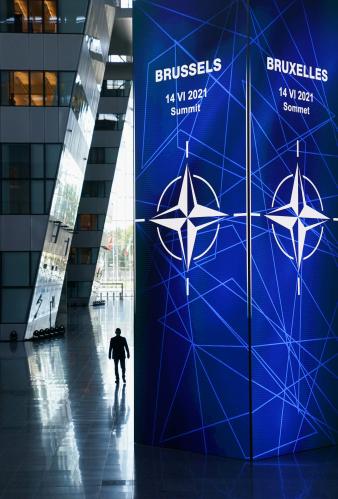
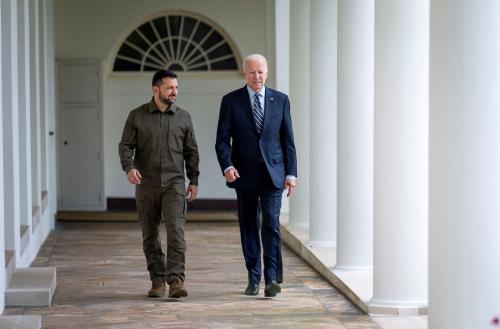
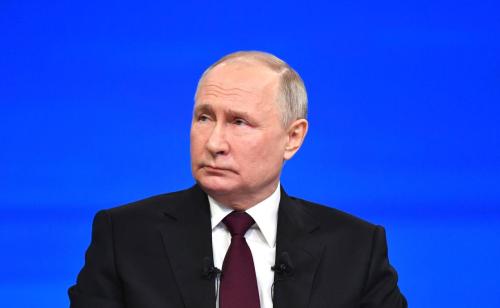
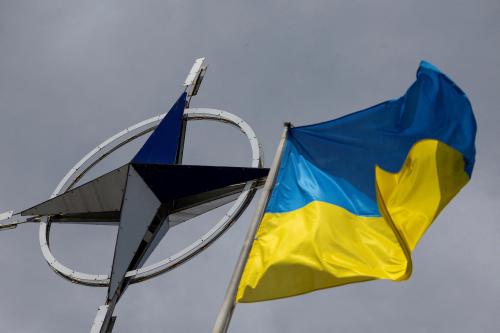
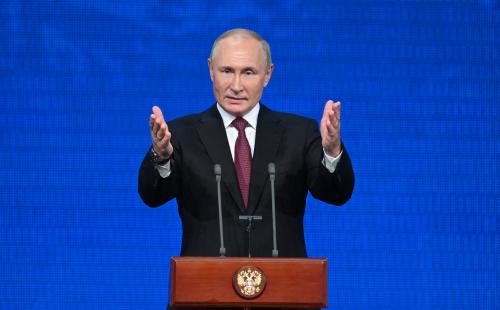
Commentary
What to watch in Ukraine in 2024
December 20, 2023